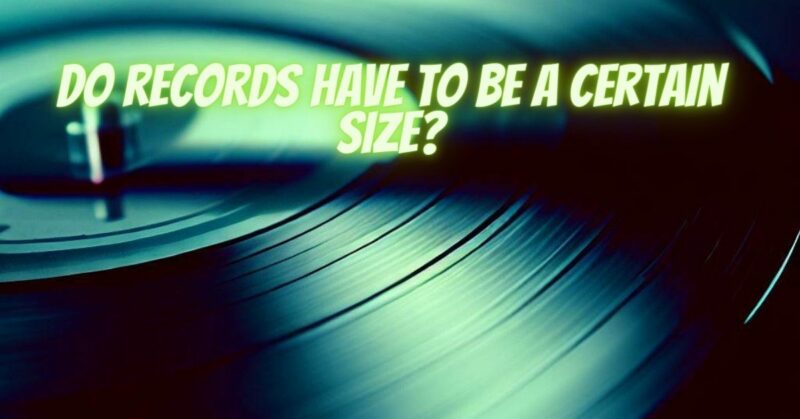Vinyl records have transcended the boundaries of time, captivating audiophiles with their rich sound and tangible charm. Yet, an intriguing question arises: do records have to be a certain size? The world of vinyl is as diverse as the music it carries, and the size of records plays a pivotal role in shaping the listening experience. In this article, we delve into the significance of record sizes and how they impact the art of analog music playback.
Variety in Record Sizes: Vinyl records come in a range of sizes, each serving a specific purpose and carrying its unique aura. The most common sizes are 12-inch LPs (long-playing), 7-inch singles (45 RPM), and 10-inch records. The choice of size often reflects the content, intended usage, and historical context of the music.
12-Inch LPs: The 12-inch LP is a cornerstone of vinyl culture. These records typically spin at 33 1/3 RPM and offer a longer playing time per side. The larger surface area allows for deeper grooves, resulting in higher fidelity and dynamic range. As a result, LPs are favored for full-length albums, offering a more immersive listening experience and often showcasing album artwork in greater detail.
7-Inch Singles: The 7-inch single, revolving at 45 RPM, is renowned for delivering succinct bursts of music. These records contain one or two songs per side and are often used to release hit singles or promotional tracks. The smaller size doesn’t compromise audio quality significantly, making singles an ideal choice for casual listening and collectors seeking iconic tracks.
10-Inch Records: Less common but still noteworthy, the 10-inch record occupies a middle ground between LPs and singles. They can offer extended playtime compared to singles while maintaining a more manageable size. These records have been utilized for various purposes, including EPs (extended plays) and special releases.
Impact on Sound Quality: The size of a record directly influences its sound quality due to the relationship between the groove size and the stylus. Larger records, such as 12-inch LPs, provide more space for grooves, allowing for better fidelity and capturing intricate details. Smaller records, like 7-inch singles, may not offer the same level of dynamic range but can still deliver satisfying audio quality suitable for shorter tracks.
Collector’s Appeal and Aesthetic: Record sizes also carry collector’s appeal and aesthetic significance. The larger canvas of LPs provides more room for intricate album artwork, liner notes, and additional creative elements. 7-inch singles are known for their iconic picture sleeves and the compact, tangible connection they offer to specific songs.
Record Player Compatibility: Different record sizes require corresponding turntable speed settings to ensure accurate playback. For instance, LPs spin at 33 1/3 RPM, while 7-inch singles typically require a speed of 45 RPM. Modern turntables often feature adjustable speed settings to accommodate various record sizes.
In the world of vinyl records, size indeed matters. The diversity in record sizes caters to the varied preferences of music enthusiasts, collectors, and artists. While larger records like 12-inch LPs offer extended playtime and enhanced audio quality, smaller records such as 7-inch singles provide a concise, immersive experience. The choice of record size ultimately depends on the content, context, and the unique way one wishes to engage with the music. As you embark on your vinyl journey, remember that the size of the record is not just a technical detail; it’s an integral part of the overall analog music experience.


